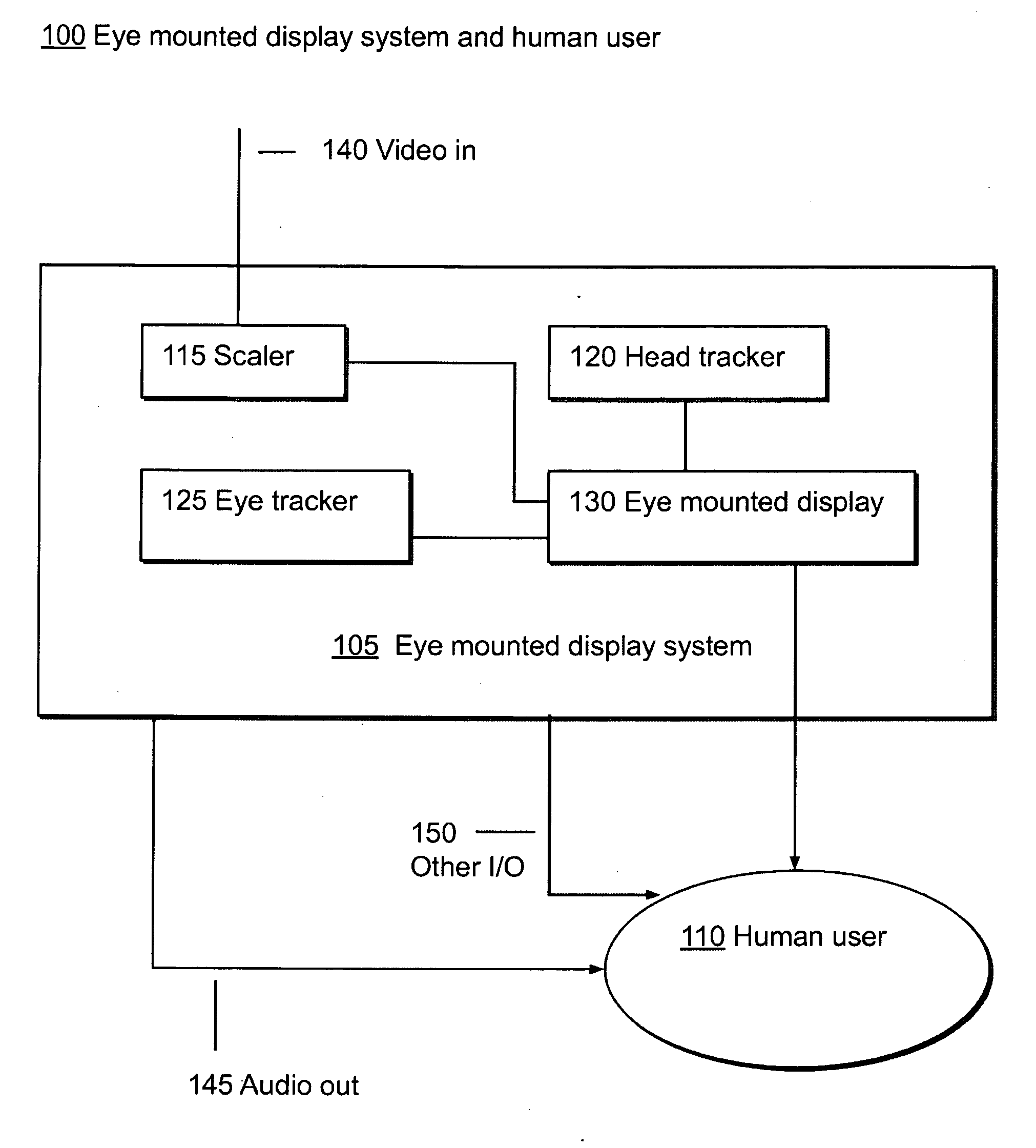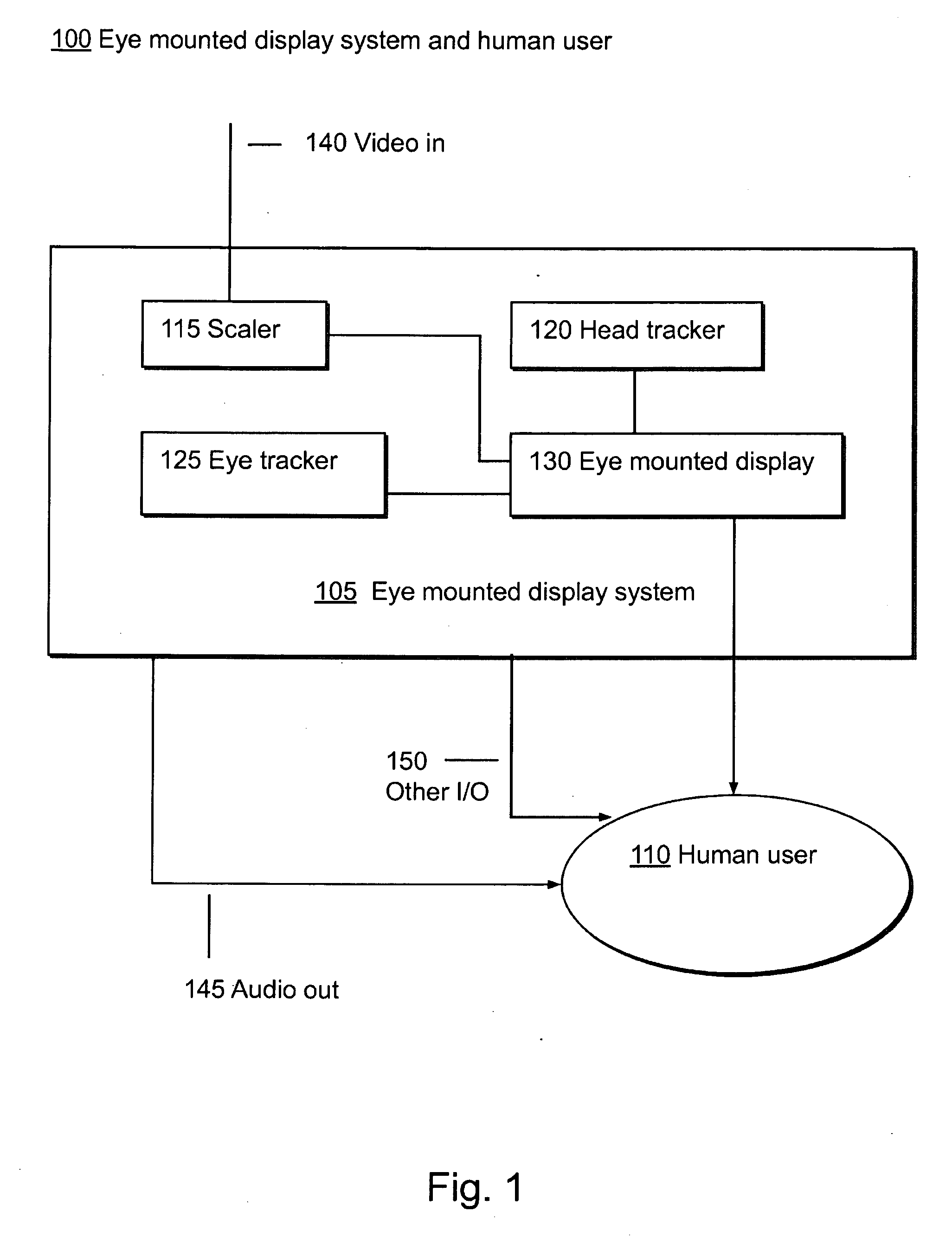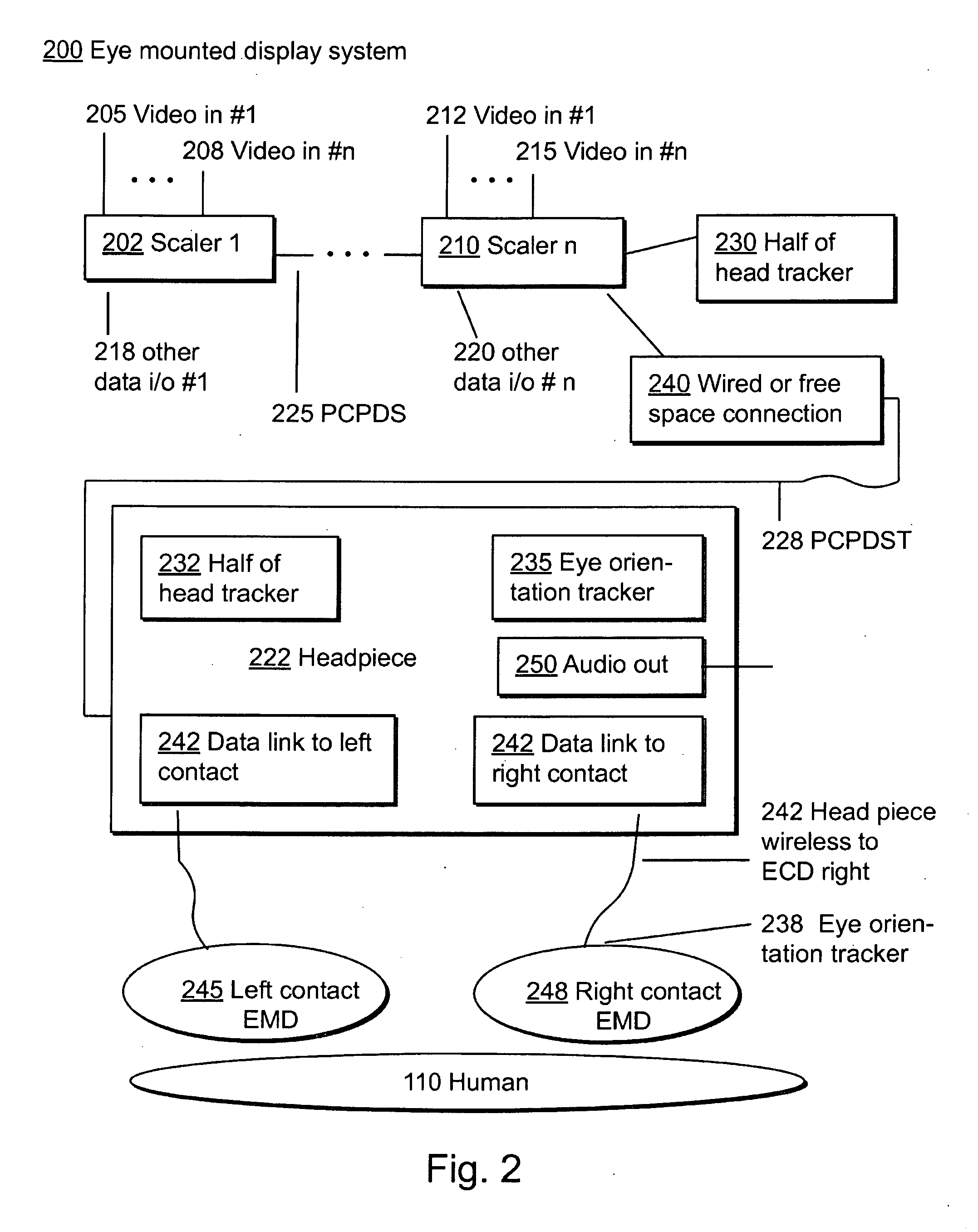Eye Mounted Displays
a technology of eye-mounted displays and displays, applied in the field of visual display technology, can solve the problems of reducing the ability to see through, reducing the range of vision, and requiring brightness, so as to avoid or reduce interference, avoid or reduce interference
- Summary
- Abstract
- Description
- Claims
- Application Information
AI Technical Summary
Benefits of technology
Problems solved by technology
Method used
Image
Examples
Embodiment Construction
Outline
I. Overview
II. Some Definitions and Descriptions
[0109]II.A. Types of Eye Mounted Displays
[0110]II.B. Further Descriptions of Eye Mounted Displays
[0111]II.C. Components of an Eye Mounted Display System
III. Underlying Concepts
[0112]III.A. Formation of Wavefronts of Light
[0113]III.B. Anatomy of the Human Eye
[0114]III.C. Retinal Receptive Fields
[0115]III.D. Formation of Images on the Photosensitive Retinal Surface from Collections of Incoming Expanding Spherical Wavefronts of Light
IV. Eye mounted Displays and Eye mounted Display Systems
[0116]IV.A. Optical Basis for Eye mounted Displays
[0117]IV.B A New Approach for Display Technologies
[0118]IV.C Sub-Displays
[0119]IV.D Embodiments of Contact Lens Mounted Displays
[0120]IV.E Internal Electronics of Eye Mounted Display Systems
[0121]IV.F Systems Aspects for Image Generators and Eye Mounted Displays
[0122]IV.G Meta-Window Systems for Eye Mounted Displays
[0123]IV.H Advantages of Eye Mounted Display Systems
I. Overview
[0124]FIG. 1 shows an ...
PUM
 Login to View More
Login to View More Abstract
Description
Claims
Application Information
 Login to View More
Login to View More - R&D
- Intellectual Property
- Life Sciences
- Materials
- Tech Scout
- Unparalleled Data Quality
- Higher Quality Content
- 60% Fewer Hallucinations
Browse by: Latest US Patents, China's latest patents, Technical Efficacy Thesaurus, Application Domain, Technology Topic, Popular Technical Reports.
© 2025 PatSnap. All rights reserved.Legal|Privacy policy|Modern Slavery Act Transparency Statement|Sitemap|About US| Contact US: help@patsnap.com



